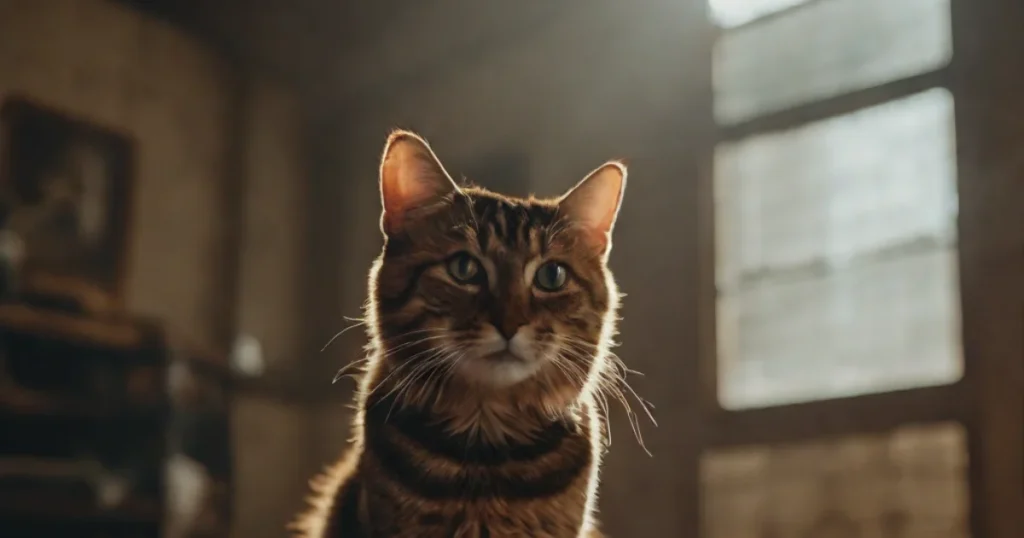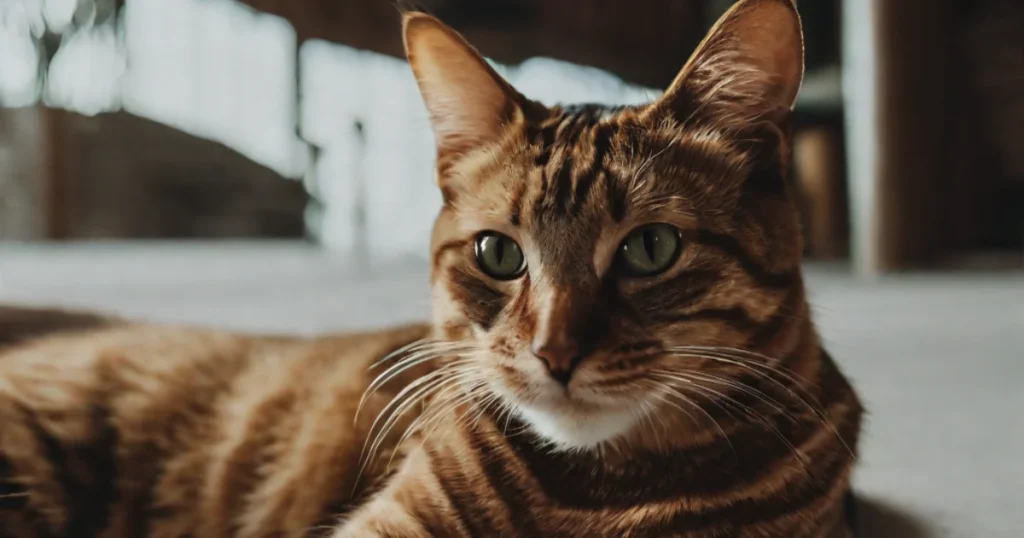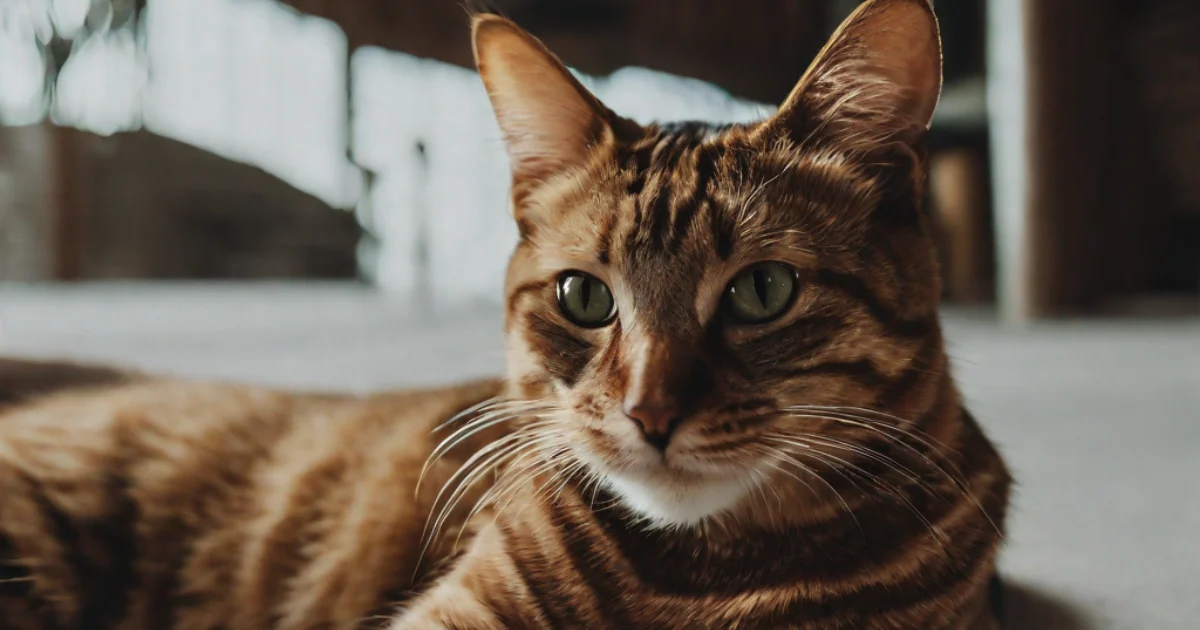Can Cats Eat Brushtail?
Yes, cats can eat brushtail, but it is important to exercise caution and moderation. Brushtail meat, such as possum or kangaroo, can be included in a cat’s diet as a source of protein. However, it is crucial to ensure that the brushtail meat is properly cooked and free from any seasonings, spices, or additives that may be harmful to cats. Additionally, consult with your veterinarian to determine the appropriate portion size and frequency of feeding brushtail to your cat, taking into consideration their individual dietary needs and any specific health conditions they may have.
Table of Contents
If you are a cat owner, you know how curious and particular our feline friends can be when it comes to their food. We want to make sure they are getting the proper nutrition and that their meals are safe for them to consume. With the rise in popularity of alternative protein sources, such as brushtail, many pet owners are wondering if their cats can eat this unique meat. Is brushtail good for cats? Can cats eat brushtails without any negative effects? In this blog post, we will explore the potential benefits and risks of feeding brushtail to your feline companion.
Understanding Your Cat’s Dietary Needs
As responsible cat owners, we must understand the dietary needs of our feline companions. Cats are obligate carnivores, which means they require a diet that is primarily made up of meat. Unlike omnivores, like dogs, cats have specific nutritional requirements that can only be met through consuming animal protein. This is because cats lack certain enzymes necessary for the digestion of plant-based foods.
In addition to being obligate carnivores, cats also have unique dietary needs when it comes to essential nutrients. For example, they require a significant amount of taurine, an amino acid found predominantly in animal tissues. Taurine plays a vital role in various physiological processes in cats, including vision and heart function. Without enough taurine in their diet, cats can develop serious health issues.
Furthermore, cats have a higher requirement for certain vitamins and minerals compared to other animals. For example, they need more vitamin A and arachidonic acid, an omega-6 fatty acid found in animal fats. These nutrients are essential for maintaining healthy skin and coat, as well as supporting overall immune function.
Considering these unique dietary needs, cat owners must provide their feline friends with a well-balanced diet that meets all of their nutritional requirements. While incorporating novel protein sources like brushtail may seem tempting, it’s essential to evaluate whether they can provide all the necessary nutrients that cats need to thrive.
What is Brushtail? – An Overview
Brushtail, also known as brush possum or Trichosurus vulpecula, is a unique protein source that has gained popularity in recent years. Native to Australia and New Zealand, the brushtail is a nocturnal marsupial that feeds on a variety of plant materials, including eucalyptus leaves and blossoms. The meat of the brushtail possum is lean and rich in nutrients, making it an enticing option for pet owners looking to diversify their cat’s diet.
Brushtail meat is often marketed as a novel protein source for cats, which can be beneficial for cats with food sensitivities or allergies. Additionally, the meat is high in protein and low in fat, making it a potentially healthier option for weight management or cats prone to obesity.
When feeding your cat brushtail, it’s important to choose a high-quality, commercially prepared cat food that contains brushtail as the main ingredient. This ensures that your cat is receiving a balanced and complete diet that meets all of their nutritional needs.
While brushtail may seem like a unique and exciting option, it’s important to note that it is still relatively new to the pet food market. As such, it’s always a good idea to consult with your veterinarian before introducing any new protein source into your cat’s diet.
Potential Benefits of Feeding Brushtail to Your Cat
Feeding brushtail to your cat may offer several potential benefits. Firstly, brushtail is a novel protein source, which means it is different from the typical meats that cats consume. This can be particularly beneficial for cats with food sensitivities or allergies. By introducing a new protein source like brushtail, you may be able to provide your cat with a nutritious alternative that doesn’t trigger any adverse reactions.
In addition, brushtail meat is lean and high in protein, making it a potentially healthier option for cats struggling with weight management or those prone to obesity. The lower fat content can help maintain a healthy body weight while still providing essential nutrients.
Moreover, the brushtail is packed with vital nutrients that cats need to thrive. It contains amino acids, like taurine, which play a crucial role in various physiological processes in cats. Taurine, for example, supports vision and heart function. By including brushtail in your cat’s diet, you can ensure they are getting the necessary nutrients to maintain optimal health.
It’s important to note that while brushtail offers potential benefits, it should be fed as part of a balanced and complete diet. Always consult with your veterinarian before making any dietary changes or introducing new protein sources to your cat’s menu.
Can Cats Eat Brushtail? Risks and Dangers
While there are potential benefits to feeding brushtail to your cat, it is important to consider the risks and dangers as well. One of the main concerns with introducing brushtail into your cat’s diet is the possibility of nutrient imbalances. As mentioned earlier, cats have specific dietary needs that must be met to maintain optimal health. If brushtail is not properly formulated or balanced with other essential nutrients, it could lead to deficiencies or imbalances.
Another risk to consider is the source of the brushtail meat. It’s crucial to ensure that the brushtail used in your cat’s food comes from a reputable and safe source. This is especially important if you are feeding your cat raw or homemade brushtail meals. Contaminated or spoiled meat can cause foodborne illnesses and gastrointestinal upset in cats.
Additionally, while brushtail is generally considered safe for cats, some individual cats may have specific sensitivities or allergies to this protein source. It’s always a good idea to monitor your cat’s reaction to new foods and consult with your veterinarian if you notice any adverse effects.
Overall, before incorporating brushtail into your cat’s diet, it is important to weigh the potential benefits against the potential risks. It’s crucial to choose a high-quality, commercially prepared cat food that contains brushtail as the main ingredient and to consult with your veterinarian to ensure it is safe and appropriate for your cat.

How to Safely Incorporate Brushtail into Your Cat’s Diet
When it comes to introducing brushtail into your cat’s diet, it’s important to proceed with caution to ensure their safety and well-being. Here are some tips on how to safely incorporate brushtail into your cat’s diet:
1. Consult with your veterinarian: Before making any dietary changes, it’s always a good idea to consult with your veterinarian. They can provide valuable insights and guidance based on your cat’s individual needs and health history.
2. Choose a high-quality, commercially prepared cat food: Look for cat food brands that offer a brushtail as the main ingredient. This ensures that the food is properly formulated and balanced with other essential nutrients that your cat needs. Avoid feeding raw or homemade brushtail meals, as they can be risky in terms of nutrient imbalances and food safety.
3. Gradually introduce brushtail: Start by incorporating small amounts of brushtail into your cat’s current food and gradually increase the portion over time. This allows their digestive system to adjust and reduces the risk of gastrointestinal upset.
4. Monitor your cat’s reaction: Pay close attention to how your cat responds to the new food. Look for any signs of allergies, such as itching, vomiting, or diarrhea. If you notice any adverse effects, stop feeding brushtail immediately and consult with your veterinarian.
5. Rotate protein sources: It’s important to provide a variety of protein sources in your cat’s diet to ensure they receive a well-rounded nutritional profile. Consider rotating brushtail with other novel protein sources or high-quality meats to provide a diverse range of nutrients.
Remember, each cat is unique, and what works for one may not work for another. Always prioritize your cat’s health and well-being, and seek professional advice if you have any concerns.
Veterinary Perspectives on Cats Eating Brushtail
When it comes to understanding the safety and suitability of feeding brushtails to your cat, it’s always important to consult with a veterinarian. These professionals have a deep understanding of feline nutrition and can provide valuable insights into whether brushtail is appropriate for your cat.
Veterinarians may have different perspectives on feeding brushtail to cats based on their individual experiences and knowledge. Some vets may be more open to the idea, especially if they have seen positive outcomes in their patients. They may believe that brushtail can be a nutritious and beneficial protein source for cats, especially those with allergies or sensitivities to more common meats.
However, other veterinarians may be more cautious about incorporating brushtail into a cat’s diet. They may express concerns about nutrient imbalances, the quality and safety of the brushtail source, or the potential for adverse reactions in certain cats.
Regardless of their specific perspective, it is important to have an open and honest conversation with your veterinarian about your intentions to feed brushtail to your cat. They can provide tailored advice and guidance based on your cat’s individual needs and health history.
Remember, veterinary perspectives may vary, so it’s always best to consult with a trusted professional before making any significant changes to your cat’s diet. Your veterinarian is the best resource to help ensure the safety and well-being of your feline friend.

Alternative Food Options for Cats
When it comes to providing our cats with a well-rounded and nutritious diet, it’s important to explore alternative food options. While traditional meats like chicken and fish are staples in most cat’s diets, it can be beneficial to introduce new and exciting protein sources. Not only does this add variety to their meals, but it can also help cater to specific dietary needs or preferences.
One alternative food option for cats is rabbit. Rabbit meat is lean, low in fat, and packed with essential nutrients. It is also a novel protein source, meaning it is different from the usual meats cats consume. This can be beneficial for cats with food sensitivities or allergies. Rabbit is highly digestible, making it a suitable option for cats with sensitive stomachs.
Another alternative food option for cats is venison. Venison is the meat from deer, and like rabbits, it is lean and low in fat. It is rich in protein, making it an excellent choice for cats that require a high-protein diet. Venison is also a great source of essential amino acids and minerals.
If you’re looking for a unique alternative, consider quail for your cat. Quail is a small game bird that provides a lean source of protein. It is high in vitamins B6 and B12, as well as essential minerals like iron and zinc. Quail meat is also low in allergenic potential, making it a suitable choice for cats with food sensitivities.
When incorporating alternative food options into your cat’s diet, it’s important to consult with your veterinarian to ensure it aligns with your cat’s specific needs. They can guide portion sizes, frequency of feeding, and any potential risks or concerns.
By introducing alternative food options for your cat, you can provide them with a diverse range of nutrients and flavors. It’s a great way to keep mealtime exciting while still meeting their nutritional requirements. So, why not give your feline friend some variety and see which alternative food options they enjoy?
Brushtail vs Other Exotic Meats – Which is Best for Your Cat?
When it comes to choosing the best exotic meat for your cat, it’s essential to consider the options available. While brushtail has its benefits, there are other exotic meats that you can explore for your feline friend.
One alternative to brushtail is kangaroo meat. Kangaroo is lean, low in fat, and a great source of high-quality protein. It contains essential amino acids, vitamins, and minerals that are important for your cat’s overall health. Kangaroo is also known for its hypoallergenic properties, making it a suitable option for cats with food sensitivities or allergies.
Another exotic meat to consider is rabbit. Rabbit meat is lean, low in fat, and easily digestible for cats. It provides a good source of protein and essential nutrients like vitamin B12 and iron. Rabbits are herbivores, so their meat is typically free from antibiotics and hormones, making it a healthy choice for your cat.
If you’re looking for a unique option, consider trying venison. Venison is the meat of deer and is known for being low in fat and rich in protein. It provides essential amino acids and is a good source of iron and vitamin B12.
When deciding on the best exotic meat for your cat, it’s important to consider their individual dietary needs and any allergies or sensitivities they may have. Consult with your veterinarian to determine which exotic meat is the best choice for your feline companion.
Brushtail: A New Addition to Your Cat’s Menu?
As a cat owner, you are always looking for ways to keep your feline friend happy and healthy. So, could Brushtail be a new addition to your cat’s menu? Brushtail, also known as brush possum, is a unique protein source that has gained popularity in recent years. But is it safe for cats to eat?
The answer is, it depends. Brushtail can offer potential benefits to cats, such as being a novel protein source that can be beneficial for cats with food sensitivities or allergies. It is also lean and high in protein, which can be helpful for weight management or cats prone to obesity. Additionally, the brushtail is packed with essential nutrients that cats need to thrive.
However, there are also risks and dangers to consider. Nutrient imbalances, the source of the brushtail meat, and individual sensitivities or allergies are factors that need to be taken into account. It is important to consult with your veterinarian before introducing brushtail into your cat’s diet.
Remember, each cat is unique, and what works for one may not work for another. It’s essential to prioritize your cat’s health and well-being and seek professional advice if you have any concerns. With careful consideration and guidance from your veterinarian, brushtail could potentially be a new addition to your cat’s menu, providing them with variety and essential nutrients.
Conclusion
In conclusion, the question of whether cats can eat brushtails comes down to a careful consideration of the potential benefits and risks. Brushtail can be a novel and nutritious protein source for cats, especially those with food sensitivities or allergies. It is lean, high in protein, and packed with essential nutrients that cats need to thrive. However, there are important factors to consider.
Firstly, cats have unique dietary needs as obligate carnivores, and their nutritional requirements must be met for optimal health. Nutrient imbalances can be a concern when introducing brushtail, so it’s crucial to choose a high-quality, commercially prepared
cat food that contains brushtail as the main ingredient. The source of the brushtail meat is also important, as it should come from a reputable and safe source.
Additionally, individual cats may have specific sensitivities or allergies to brushtail, so it’s essential to monitor their reaction and consult with a veterinarian if any adverse effects occur.
Ultimately, incorporating brushtail into your cat’s diet can be a safe and beneficial choice, but it should be done with caution and under the guidance of a veterinarian. Each cat is unique, and what works for one may not work for another. By prioritizing your cat’s health and seeking professional advice, you can determine if brushtail is a suitable addition to your cat’s menu and provide them with the variety and essential nutrients they need to thrive.
FAQs
Q: Can dogs eat brushtail?
A: Dogs can eat brushtail meat, such as possum or kangaroo, as it can be a source of protein. However, it is important to ensure that the meat is properly cooked and free from any seasonings, spices, or additives that may be harmful to dogs. It is recommended to consult with your veterinarian regarding the appropriate portion size and frequency of feeding brushtail to your dog.
Q: What animals do brushtail possums eat?
A: Brushtail possums primarily feed on a diet consisting of leaves, flowers, fruits, and occasionally small insects. Their diet can vary depending on their habitat and availability of food sources.
Q: What is brushtail dog food?
A: Brushtail dog food refers to dog food that contains brushtail meat as one of its main ingredients. It is formulated to provide dogs with a balanced and nutritious diet, often using brushtail as a novel protein source. It is important to choose high-quality dog food brands that meet the nutritional needs of dogs.
Q: Is Zealandia a good brand?
A: Zealandia is a pet food brand that offers a range of natural and grain-free dog and cat food options. While opinions on pet food brands can vary, Zealandia has gained popularity for its focus on using high-quality ingredients and offering a variety of protein sources. It is recommended to review the specific product ingredients and consult with your veterinarian to determine if it aligns with your pet’s dietary needs.

